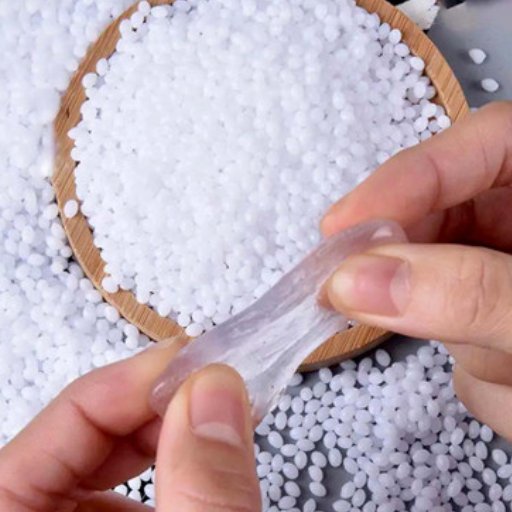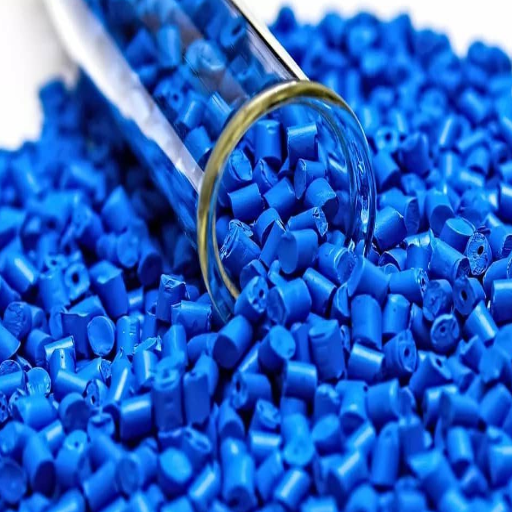Polyamide fabric, commonly recognized as nylon, is a groundbreaking synthetic material with a wide range of applications across industries. First developed in the 1930s by DuPont, polyamide fabric has become one of the most widely utilized types of synthetic textiles due to its exceptional durability, flexibility, and resistance to wear and tear. This article explores the origins and properties of polyamide, its significant advantages compared to natural fibers, and its various uses in sectors such as fashion, engineering, and manufacturing. By understanding the technical composition and performance characteristics of polyamide, readers will gain insight into why this versatile fabric has maintained its relevance for decades in both functional and aesthetic contexts.
What exactly is polyamide and how does it relate to nylon?
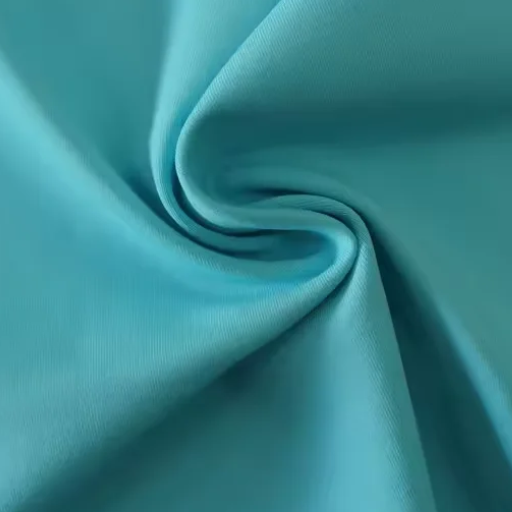
Polyamide is a type of synthetic polymer made through the polymerization of monomers containing amide groups. It is notable for its strength, elasticity, and resistance to wear and tear, which makes it a preferred material in various applications. Nylon, one of the most well-known polyamides, was first developed by DuPont in 1935 as a lightweight and durable alternative to silk. While “nylon” is often used interchangeably with “polyamide,” the term polyamide refers to a broader category of materials that include other variations used in both textiles and industrial applications. Nylon is thus a subset of polyamides, specifically engineered for its unique combination of flexibility and durability.
Defining polyamide as a synthetic polymer
Polyamides are a class of synthetic polymers characterized by the presence of amide linkages (-CO-NH-) within their molecular structure. These polymers are typically derived through the polymerization of monomers, such as diamines and dicarboxylic acids or through the self-condensation of amino acids or lactams. This structural composition accounts for their exceptional strength, thermal resistance, and versatility. Commonly recognized applications of polyamides include engineering plastics, textiles, and films, with nylon being one of the most prominent examples. The materials are valued for their high mechanical performance, low friction, and resilience under varying environmental conditions, making them integral to industries such as automotive, aerospace, and consumer goods.
The connection between polyamide and nylon
Polyamide, commonly known as nylon, is a broad class of synthetic polymers characterized by amide bonds linking repeating units. Nylon, a specific type of polyamide, stands out as one of the most well-known and widely used variants. Developed in the 1930s by DuPont, nylon’s production and properties, such as durability, elasticity, and resistance to wear, stem from the same chemical structure inherent to polyamides. Essentially, all nylons are polyamides, but not all polyamides are nylons, as the term encompasses a wider range of polymers beyond nylon alone.
Common types of polyamide fibers
The most prevalent types of polyamide fibers include nylon 6 and nylon 6,6. Nylon 6 is created through the polymerization of caprolactam, offering excellent strength and elasticity, making it suitable for a wide range of applications such as textiles and industrial products. Nylon 6,6, derived from hexamethylenediamine and adipic acid, is known for its superior resistance to heat, chemicals, and abrasion, frequently used in high-performance engineering plastics and fibers. Other polyamides, such as aramids (e.g., Kevlar and Nomex), provide exceptional thermal and mechanical stability, often utilized in protective clothing and specialized industrial applications.
What are the key properties and advantages of polyamide fabric?

Polyamide fabric is highly regarded for its exceptional durability, elasticity, and resistance to wear and tear. It exhibits excellent moisture-wicking properties, making it ideal for activewear and outdoor apparel. Additionally, it has high tensile strength and abrasion resistance, ensuring longevity even under demanding conditions. Polyamide fabrics are lightweight and quick-drying, providing superior comfort and practicality. Furthermore, they are resistant to mold, mildew, and most chemicals, which enhances their performance in industrial and technical applications. These properties collectively make polyamide an incredibly versatile and valued material across multiple industries.
Durability and abrasion resistance
Polyamide fabrics exhibit exceptional durability and abrasion resistance due to their highly crystalline molecular structure. This structure allows the material to withstand repeated mechanical stress, making it ideal for applications that demand long-term resistance to wear and tear. According to leading sources, polyamide is widely utilized in the production of products such as industrial machinery components, sportswear, and carpeting, where high levels of friction resistance are essential. Its ability to maintain structural integrity under extreme conditions, coupled with its lightweight properties, ensures that polyamide remains a top choice for industries requiring robust and reliable materials.
Moisture-wicking and quick-drying capabilities
Polyamide demonstrates excellent moisture-wicking and quick-drying capabilities, making it a key material in performance apparel and technical fabrics. Its hydrophobic nature allows it to repel water efficiently, channeling moisture away from the skin and promoting rapid evaporation. This mechanism helps regulate body temperature and provides enhanced comfort during physical activity or in humid conditions. According to top industry sources, polyamide fabrics are often treated with additional finishes to further enhance these properties, ensuring optimal performance across a range of applications. It is widely used in activewear, undergarments, and outdoor gear due to its ability to combine efficient moisture management with durability and flexibility.
Elasticity and shape retention
Polyamide fabrics are renowned for their exceptional elasticity and ability to retain shape, making them ideal for applications requiring consistent performance and durability over time. The inherent stretchiness of polyamide fibers allows garments to move with the body, ensuring both comfort and a snug fit. Additionally, polyamide exhibits excellent resistance to deformation, meaning it can return to its original size and shape even after repeated wear and washing. This property is further enhanced by blending polyamide with elastane or spandex, resulting in fabrics that maintain their structural integrity and functionality in demanding conditions such as sports or high-intensity activities.
How does polyamide fabric compare to other synthetic materials?
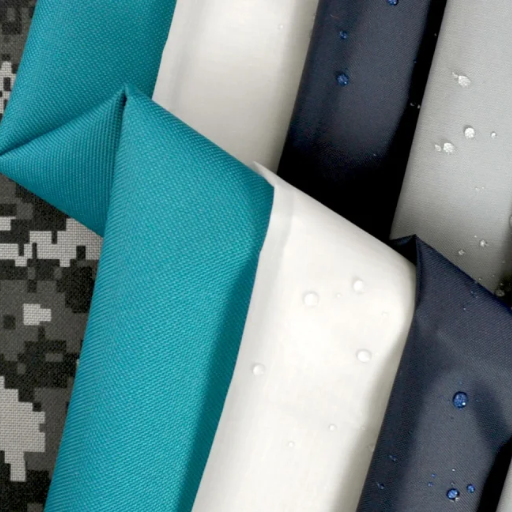
Polyamide fabric stands out among synthetic materials due to its superior durability, elasticity, and resistance to wear and tear. Compared to polyester, polyamide offers higher tensile strength and a softer, smoother texture, making it more comfortable for applications such as activewear and lingerie. Unlike acrylic, polyamide provides better moisture-wicking capabilities, which is essential for maintaining comfort during physical activity. Additionally, compared to synthetic blends like polyester-spandex, polyamide’s resilience and ability to withstand repeated washing without losing its shape give it a competitive edge in demanding environments. However, polyamide may be more prone to pilling than polyester, which can affect its long-term appearance.
Polyamide vs. polyester: Key differences
Polyamide and polyester are both synthetic fibers with distinct characteristics that make them suited for different applications. Polyamide, commonly known as nylon, is generally softer and more durable, offering higher abrasion resistance and elasticity. This makes it ideal for sportswear, activewear, and applications requiring flexibility. Polyester, on the other hand, is widely recognized for its superior moisture resistance, faster drying properties, and resistance to shrinkage, making it a preferred choice for outdoor clothing and furnishings.
When it comes to moisture management, polyester is more hydrophobic, allowing it to wick sweat away quickly and dry faster, whereas polyamide, while still moisture-wicking, tends to absorb slightly more water, leading to comparatively slower drying times. Regarding durability, polyamide outperforms polyester in terms of tensile strength and resistance to wear and tear, but polyester has better UV resistance, making it more suitable for prolonged sun exposure.
Both materials are versatile and cost-effective but differ in environmental impact. Polyester production is generally less energy-intensive, while polyamide is more challenging to recycle. Selecting between the two largely depends on the intended use, performance requirements, and sustainability priorities.
Comparing polyamide to natural fibers like cotton and wool
Polyamide stands out due to its superior durability and elasticity compared to natural fibers like cotton and wool. Cotton excels in breathability and softness, making it ideal for comfort, while wool provides excellent insulation and moisture-wicking properties. However, polyamide outperforms both in resistance to abrasions and quick-drying capabilities. That said, natural fibers are more sustainable and biodegradable, whereas polyamide, being synthetic, raises environmental concerns related to production and recycling. The choice depends heavily on the balance between performance needs and environmental considerations.
Advantages of polyamide over other synthetics
Polyamide, commonly known as nylon, exhibits several technical advantages when compared to other synthetic materials like polyester or acrylic. Firstly, polyamide is renowned for its superior tensile strength and elasticity, making it ideal for applications requiring durable and stretchable materials, such as sportswear and industrial products. Secondly, it demonstrates excellent abrasion resistance, significantly outperforming polyester in environments where friction and wear are critical concerns. Additionally, polyamide fibers possess lower moisture regain compared to many synthetics, enabling faster drying times and enhanced comfort in humid conditions. From a manufacturing perspective, polyamide’s molecular structure allows for greater customization, such as texturizing or blending with other fibers, to achieve tailored performance characteristics. The combination of these properties makes polyamide a preferred choice for applications demanding robust, adaptable, and technically refined materials.
What are the most common applications for polyamide fabric?

Polyamide fabric is widely used across various industries due to its strength, durability, and adaptability. Common applications include activewear and swimwear, where its elasticity and moisture-wicking properties are advantageous. It is extensively utilized in producing outdoor gear, such as tents and backpacks, given its resistance to abrasion and rapid drying capability. Additionally, polyamide is a staple in industrial uses, including ropes, conveyor belts, and protective garments, owing to its robustness and resilience under stress. Its versatility also extends to fashion, where it is often blended with other fibers to create lightweight, durable clothing.
Sportswear and activewear
Sportswear and activewear are designed to enhance athletic performance while ensuring comfort and durability. Modern sportswear heavily incorporates technical fabrics such as polyamide, polyester, and elastane, known for their moisture-wicking, stretchability, and quick-drying properties. These materials are engineered to regulate body temperature, reduce friction, and provide optimal mobility during physical activities.
The rise of compression technology in activewear has further revolutionized this sector by improving blood circulation, reducing muscle fatigue, and aiding recovery. Additionally, advancements in design integrate features like UV protection, antimicrobial treatments, and seamless construction, enhancing both functionality and aesthetics. Sportswear and activewear cater to a variety of activities, from high-intensity workouts to leisurewear, ensuring garments meet the specific needs of diverse athletic pursuits.
Lingerie and hosiery
Lingerie and hosiery have evolved significantly to meet both functional and aesthetic demands. Modern lingerie combines comfort with style, utilizing materials such as lace, satin, and microfiber for durability and visual appeal. Furthermore, technical innovations in hosiery, like gradient compression and run-resistant fibers, ensure practicality and longevity. These garments are designed not only to enhance confidence but also to provide essential support and shaping, making them integral to contemporary wardrobes.
Technical and industrial uses
Lingerie and hosiery are not only fashion staples but also hold significance in technical and industrial applications. Compression hosiery, for instance, is widely used in the medical field to improve circulation, reduce swelling, and manage conditions such as deep vein thrombosis. These garments utilize gradient pressure technology, strategically designed to exert maximum compression at the ankle and gradually decrease upwards, thereby aiding blood flow toward the heart.
From an industrial perspective, innovations in textile technology pave the way for highly durable, functional fabrics. Advanced synthetic fibers like elastane and nylon ensure elasticity, resilience, and moisture resistance, crucial for both professional sportswear and specialized workwear. Additionally, antimicrobial treatments and breathable textiles employed in certain lingerie and hosiery further enhance hygiene and long-term wearability, demonstrating the versatility of these garments beyond traditional uses.
How is polyamide fabric manufactured?
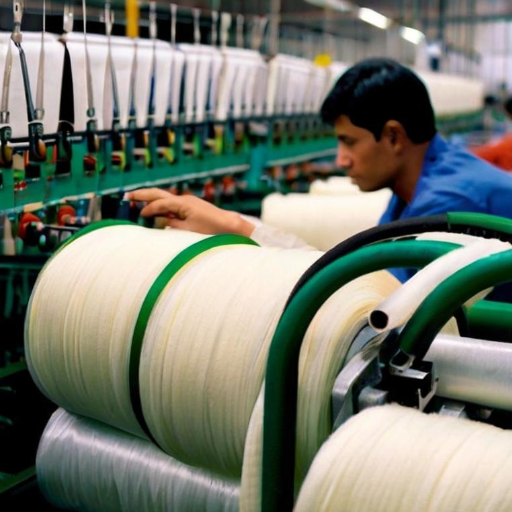
Polyamide fabric, commonly known as nylon, is manufactured through a process called polymerization. This involves combining monomers, such as adipic acid and hexamethylenediamine, under high heat and pressure to form strong polymer chains. These polymers are then melted and extruded through spinnerets, creating continuous filaments. Once the filaments cool and solidify, they are drawn and stretched to enhance strength and elasticity. The resulting fibers are then spun into yarns or woven into fabric, depending on the intended application.
The polymerization process
Polymerization, the process critical to nylon production, can be categorized primarily into step-growth polymerization and chain-growth polymerization. For nylon, step-growth polymerization is utilized, specifically involving condensation reactions. During this process, monomers like adipic acid and hexamethylenediamine react through the elimination of small molecules such as water, forming long polymer chains. The reaction typically requires precise temperature control (approximately 260-280°C) and occurs under high-pressure environments to ensure proper chain formation.
After polymerization, the molten product is cooled and solidified into chips, which are later reheated and extruded into filaments. This meticulous procedure ensures consistent structural integrity and the desired physical properties of nylon, including tensile strength and elasticity.
Spinning polyamide fibers
When spinning polyamide fibers, the molten polyamide is extruded through spinnerets, which are specially designed nozzles that shape the material into fine strands. These strands solidify as they cool, forming continuous fibers. Following extrusion, the fibers undergo stretching to align the polymer chains, thereby increasing tensile strength and elasticity. This process requires precise synchronization of temperature, extrusion speed, and stretching to achieve the desired fiber characteristics.
Textile production techniques
To produce textiles from polyamide fibers, we employ techniques such as weaving, knitting, and non-woven fabric bonding. Weaving involves interlacing the fibers on looms to create structured, durable fabrics, while knitting produces more flexible and stretchable materials through the interlooping of yarn. For non-woven textiles, processes like chemical bonding, thermal bonding, or mechanical entanglement are used to create versatile and lightweight fabrics directly from fibers, circumventing traditional yarn production. Each method is carefully selected based on the intended application and required properties of the final product.
Are there different types of polyamide fabrics?

There are several types of polyamide fabrics, each with distinct properties tailored to specific applications. The most common types include Nylon 6 and Nylon 6,6, which differ in their molecular structures and performance characteristics. Nylon 6 offers better elasticity and ease of dyeing, while Nylon 6,6 is known for its superior strength, thermal resistance, and durability. Additionally, innovations such as bio-based polyamides and high-performance aramid fibers (e.g., Kevlar and Nomex) provide enhanced properties like flame resistance, impact resistance, and environmental sustainability for specialized uses.
Nylon 6 vs. Nylon 6,6
Nylon 6 and Nylon 6,6 are both polyamide materials, but their differences lie in molecular structure and performance. Nylon 6 is synthesized through ring-opening polymerization, resulting in a single monomer chain. This molecular structure gives it superior elasticity, better impact resistance, and ease of dyeing. Nylon 6 is also more economical to produce, making it ideal for applications such as textiles, packaging films, and industrial components.
Nylon 6,6, in contrast, is formed through condensation polymerization of two distinct monomers, hexamethylenediamine and adipic acid. This results in stronger hydrogen bonds and a more crystalline structure, providing enhanced strength, stiffness, and thermal resistance. Nylon 6,6 can withstand higher temperatures and exhibits greater wear and fatigue resistance, making it suited for high-performance uses like automotive parts, electrical connectors, and industrial machinery.
While both materials are versatile, the choice between Nylon 6 and Nylon 6,6 often depends on the specific thermal, mechanical, and economic requirements of the intended application.
Specialty polyamides: Aramids and other variants
Specialty polyamides, such as aramids, are high-performance polymers characterized by exceptional strength-to-weight ratios, thermal stability, and resistance to abrasion. Aramids, notably Kevlar and Nomex, are synthesized through the reaction of aromatic diamines and aromatic diacid chlorides, resulting in a highly oriented, aromatic structure. This molecular composition yields properties like superior tensile strength, inherent flame resistance, and excellent chemical stability, making aramids ideal for critical applications, including ballistic protection, aerospace components, and heat-resistant textiles.
Other specialty polyamides, such as semi-aromatic polyamides (PPA) and bio-based variants, have been developed to address specific industry demands. PPAs exhibit higher dimensional stability, reduced water absorption, and superior resistance to heat and chemicals, making them indispensable for automotive under-the-hood components and electronic applications. Bio-based polyamides, derived from renewable resources like castor oil, provide sustainable alternatives without sacrificing performance, maintaining application versatility while reducing environmental impact. These advanced polyamides play a crucial role in meeting both technical requirements and sustainability goals across various sectors.
Blended fabrics containing polyamide
Blended fabrics containing polyamide are widely utilized due to their ability to combine the advantageous properties of polyamide with those of other fibers, such as cotton or polyester. These blends enhance durability, elasticity, and resistance to abrasion, making them suitable for applications in activewear, outerwear, and upholstery. By integrating polyamide, blended fabrics achieve improved tensile strength and performance under stress, while other fibers contribute softness or moisture-wicking capabilities. This synergy of properties allows manufacturers to tailor fabrics to specific functional and aesthetic needs across various sectors, balancing comfort with performance.
What are the environmental considerations of using polyamide fabric?

Polyamide fabrics, while highly functional, present several environmental considerations that must be addressed. The production process of polyamide is resource-intensive, utilizing significant amounts of energy and water, and it relies heavily on petroleum-based raw materials, contributing to greenhouse gas emissions. Additionally, polyamide fabrics are not biodegradable, leading to long-term environmental persistence if not properly managed through recycling or disposal. The release of microplastics during washing further exacerbates environmental pollution, impacting marine ecosystems. Mitigation strategies, such as adopting recycled polyamide and promoting closed-loop production systems, are critical in reducing the ecological footprint of these materials.
Sustainability concerns in production
The production of polyamide fabrics raises key sustainability concerns, primarily due to resource demand and environmental impact. Polyamide manufacturing consumes substantial energy, often derived from non-renewable sources such as fossil fuels, and requires significant water input, adding to its environmental footprint. Furthermore, the process generates greenhouse gas emissions, notably nitrous oxide, a potent contributor to climate change. The reliance on petroleum-based raw materials also means the continued extraction and depletion of finite natural resources.
Another major issue is waste management; polyamide fabrics are not biodegradable, which leads to persistent waste in landfills unless recycling initiatives are implemented. Additionally, washing polyamide garments releases microplastics into waterways, posing risks to marine life and entering the broader food chain. Addressing these challenges requires a shift toward incorporating recycled polyamide in production and implementing closed-loop systems, which minimize waste by reprocessing materials back into the production cycle. Such measures, combined with advancements in renewable energy utilization and efficient resource use, can help mitigate the environmental impact of polyamide production.
Recyclability and biodegradability
Recyclability of polyamide fabrics largely depends on the infrastructure and technology available for processing these materials. Many polyamide products can be recycled into secondary materials through mechanical or chemical processes, but these systems require significant investment and are not widely accessible. Unfortunately, in terms of biodegradability, traditional polyamide is non-biodegradable and can persist in the environment for decades if not properly recycled. However, advancements in biodegradable alternatives, such as bio-based polyamides, are emerging and may offer solutions. Prioritizing both improved recycling systems and the development of biodegradable options is crucial to reduce the environmental footprint of these fabrics.
Innovations in eco-friendly polyamide materials
Recent advancements in eco-friendly polyamide materials focus on reducing environmental impacts through sustainable sourcing, advanced recycling technologies, and the development of biodegradable materials. One innovation includes the production of polyamides derived from bio-based feedstocks, such as castor oil, which reduces reliance on fossil fuels. These bio-based polyamides exhibit similar performance properties to traditional ones while offering a lower carbon footprint. Additionally, enhanced chemical recycling processes have emerged, enabling the breakdown of polyamide products into their monomers for reuse in manufacturing, significantly reducing waste. The introduction of partially or fully biodegradable polyamide formulations is another promising development, addressing the issue of long-term environmental persistence. By combining these approaches, the industry is working toward polyamide materials that not only meet performance standards but also align with the principles of sustainability and circular economy.
References
Frequently Asked Questions (FAQ)
Q: What is polyamide fabric made from?
A: Polyamide fabric is made from synthetic polyamide fibers, which are derived from plastic-based monomers. The most common type of polyamide fabric is nylon, which is produced using adipic acid and other chemical compounds. There are various types of polyamides used in fabric production, including aliphatic polyamides like nylon 6, nylon 66, nylon 11, and nylon 12, as well as aromatic polyamides.
Q: What is the difference between polyamide and nylon fabric?
A: There is no significant difference between polyamide and nylon fabric, as nylon is actually a type of polyamide. Nylon is the brand name for a specific synthetic polyamide material, while polyamide is the general term for a class of synthetic polymers. In the textile industry, the terms “polyamide” and “nylon” are often used interchangeably, with nylon being more commonly known in consumer markets.
Q: What are the properties of nylon or polyamide fabric?
A: Polyamide fabric, also known as nylon, has several desirable properties. It is strong, durable, and resistant to wear and tear. The material is also lightweight, quick-drying, and has good elasticity. Polyamide fabrics are often wrinkle-resistant, easy to care for, and have excellent abrasion resistance. Additionally, some types of polyamide fabrics can be breathable and moisture-wicking, making them suitable for various applications.
Q: How is polyamide fabric used in clothing?
A: Polyamide fabric is widely used in the clothing industry due to its versatile properties. It’s often used in sportswear, activewear, and swimwear due to its durability and quick-drying nature. Polyamide is also popular in women’s clothing, particularly in lingerie and hosiery, because of its softness and elasticity. Additionally, it’s used in outerwear, such as jackets and coats, for its water-resistant properties and in blends with other fibers to enhance the overall performance of the fabric.
Q: Is polyamide fabric breathable?
A: While polyamide fabric is not naturally as breathable as some natural fibers like cotton, certain types of polyamide fabrics can be engineered to be breathable. Manufacturers can create microfiber polyamides or use special weaving techniques to improve air circulation and moisture management. Some polyamide fabrics are designed to wick moisture away from the skin, which can help with breathability and comfort, especially in activewear and sportswear applications.
Q: How does polyamide fabric compare to polyester fabric?
A: Both polyamide (nylon) and polyester are synthetic fabrics, but they have some differences. Polyamide tends to be stronger, more durable, and more elastic than polyester. It also has better moisture-wicking properties and a softer feel. Polyester, on the other hand, is generally more resistant to UV rays, retains its shape better, and is often less expensive. Both fabrics are commonly used in sportswear and outdoor gear, but polyamide is more frequently used in applications requiring high strength and elasticity.
Q: What are the advantages of using nylon or polyamide fabric?
A: The advantages of using nylon or polyamide fabric include its high strength-to-weight ratio, excellent durability, and resistance to abrasion. It’s also easy to care for, quick-drying, and often wrinkle-resistant. Polyamide fabrics have good elasticity and shape retention, making them suitable for form-fitting garments. They are also resistant to many chemicals and have low moisture absorption, which makes them ideal for outdoor and water-resistant applications. Additionally, polyamide fabrics can be engineered to have various properties, such as improved breathability or enhanced thermal insulation.
Q: How is nylon or polyamide fabric produced?
A: The production of nylon or polyamide fabric involves several steps. First, the polyamide polymer is synthesized through a chemical reaction, typically using monomers like adipic acid and hexamethylenediamine for nylon 66, or caprolactam for nylon 6. The resulting polymer is then melted and extruded through tiny holes to form long fibers. These fibers are stretched and cooled to align the molecules and increase strength. The fibers can then be spun into yarns and woven or knitted into fabric. Various treatments and finishes may be applied to enhance specific properties of the final fabric.
Q: Are there any natural polyamides used in fabric production?
A: While most polyamide fabrics are synthetic, there are some natural polyamides found in nature. Silk is a natural polyamide protein fiber produced by silkworms. However, when referring to polyamide fabrics in the textile industry, it generally means synthetic polyamides like nylon. The vast majority of polyamide fabrics used in clothing and other applications are man-made due to their consistent quality, versatility, and the ability to produce them on a large scale.
Q: What are some common applications of polyamide fabric besides clothing?
A: Polyamide fabric, particularly nylon, is a versatile material with numerous applications beyond clothing. It’s commonly used in the production of ropes, parachutes, and other high-strength applications due to its durability. Polyamide is also used in automotive textiles, such as seat covers and airbags. In the industrial sector, it’s used for conveyor belts, hoses, and filters. Polyamide fabrics are popular in outdoor gear like tents, sleeping bags, and backpacks. They’re also used in home furnishings, such as carpets and upholstery, and in medical textiles for their easy-to-clean and durable properties.


